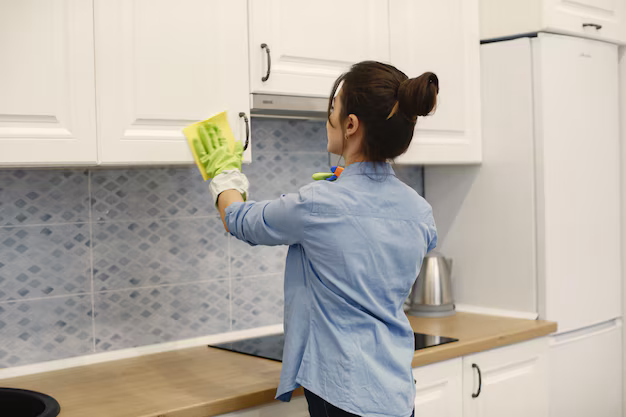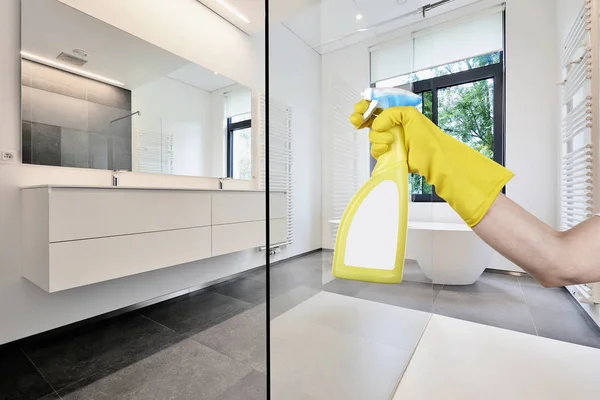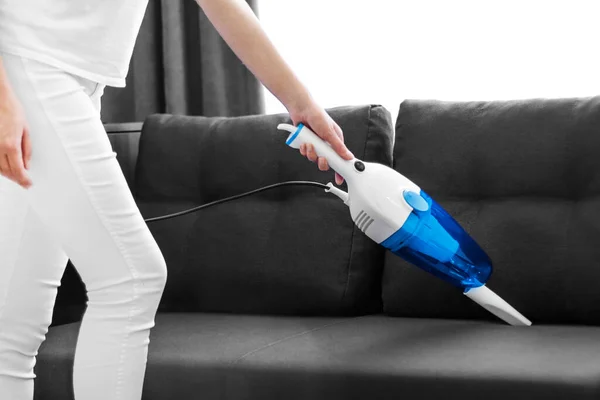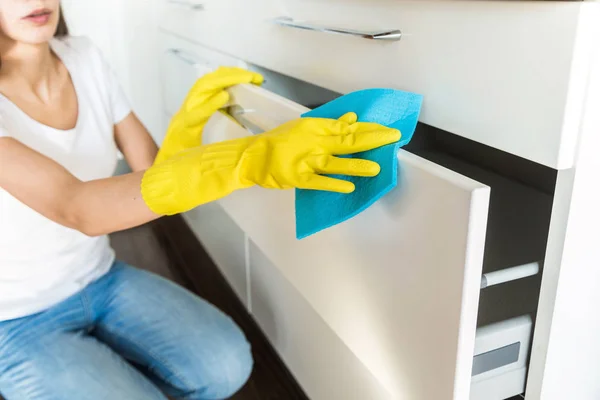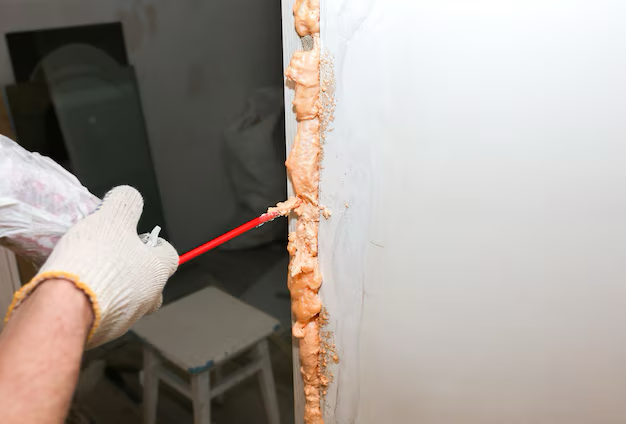Maintaining a clean home is essential for comfort, health and property value. Deep cleaning and small repairs can instantly refresh your living space, making it feel brand new. This guide will outline the benefits of deep cleaning and small repairs and discuss the various practical steps to implement these tasks.

Benefits of Deep Cleaning and Small Repairs
Before going over the benefits, let’s understand what ‘deep cleaning’ and ‘small repairs’ are.
In maintaining a clean and functional living space, two essential practices come into play: deep cleaning and small repairs. While both are crucial, they serve different purposes and involve distinct processes in ensuring that our homes remain comfortable, safe and aesthetically pleasing.
Deep cleaning is an intensive process that involves thoroughly cleaning all home areas, including those often neglected during routine cleaning. In addition, the deep cleaning process can also improve indoor air quality and overall well-being.
Small repairs, on the other hand, involve addressing minor maintenance tasks that can arise in a home or facility. These repairs typically focus on fixing small issues or damages. They are usually straightforward tasks that can be completed quickly and often without professional assistance.
Deep cleaning and small repairs offer different benefits, including:
- Improved home appearance. A clean and well-maintained home looks more inviting and polished. Regular deep cleaning removes accumulated dirt, restoring the original beauty of surfaces and fixtures. A fresh coat of paint or a well-organised space can also significantly enhance the visual appeal.
- Better health and hygiene. Deep cleaning reduces allergens, dust and germs, leading to a healthier living environment. According to research, maintaining clean living spaces reduces exposure to harmful pathogens, bacteria and mould, thereby decreasing respiratory issues. This is vital for families with young children.
- Increased home value. Proper maintenance can preserve and even increase property value. Addressing minor repairs promptly prevents them from escalating into larger, more costly issues.
- Enhanced comfort. Small fixes can make your home more functional and enjoyable. For instance, repairing leaky faucets or tightening loose handles can prevent daily annoyances, contributing to a more comfortable and hassle-free living experience.
Preparing for Deep Cleaning and Repairs
Effective preparation is key to a successful deep clean and repair project. Here are some steps you can take to prepare for this:
Plan and Prioritise
Start by creating a checklist of areas to clean and repairs to address. With a clear plan, the tasks become less daunting. Make a list that includes high-traffic areas like the living room and kitchen for deep cleaning and specific repairs, such as fixing a leaky faucet in the bathroom or patching up a hole in the wall.
Gather Necessary Tools and Supplies
Ensure you have the right cleaning products, such as multi-purpose cleaners and disinfectants, alongside tools for small repairs like hammers, screwdrivers and spackles.
Allocate Time
Set aside a weekend or multiple days to tackle your tasks. Having a designated time helps prioritise deep cleaning and repairs amidst a busy schedule. For instance, block out Saturday for deep cleaning the bedrooms and bathrooms while reserving Sunday for completing small repairs around the house, ensuring you have ample time to focus on each task without feeling rushed.
Get the Whole Family Involved
Assign specific tasks to each family member. This not only speeds up the process but also makes it more enjoyable. You can designate one family member to vacuum and dust the living room, another to clean the kitchen surfaces and someone else to handle yard work or outdoor repairs. This teamwork fosters collaboration and can turn cleaning into a fun family activity.
Step-by-Step Guide to Deep Cleaning
Here’s an essential guide to deep cleaning your home:
1. Declutter Before Cleaning
Begin by removing unnecessary items to create a clean slate. Consider organising and donating items you no longer use.
Here are some effective tips to guide you through the process:
- Start small. Don’t try to tackle everything at once. Choose one area, like a drawer, a shelf or a corner of a room, to begin. This prevents feeling overwhelmed and gives you a quick win to motivate you.
- The four-box method. Label four boxes: ‘Keep,’ ‘Donate,’ ‘Trash,’ and ‘Relocate.’ Go through your items and place them in the appropriate box. This makes sorting much more efficient.
- For each item, ask yourself:
- Have I used this in the past year?
- Do I love it?
- Does it serve a purpose in my life? If the answer is no to most of these questions, it’s likely time to let it go.
- Be realistic. We all have sentimental items, but sometimes, we must be honest about what we truly need and what’s just taking up space.
- Don’t procrastinate. Once you’ve decluttered, deal with the boxes immediately. Don’t let them sit around and become clutter themselves! Schedule a donation pickup, bin them or take the items to a donation centre immediately.
- Maintenance is key. After you’ve decluttered, make an effort to maintain the order. Put things back where they belong and do a quick decluttering session regularly to prevent clutter from building up again.
2. Start with High-Traffic Areas
Focus your initial cleaning efforts on the living room, kitchen and bathrooms, where most foot traffic occurs. Pay special attention to frequently touched surfaces, such as light switches and doorknobs.
3. Deep Cleaning Key Areas
Focusing on key areas can make a significant difference in the overall cleanliness and comfort of your living space. Below are some specific areas to prioritise during your deep cleaning efforts:
- Floors and carpets. Vacuum, mop or shampoo carpets for a refreshed look.
- Windows and curtains. Wipe windows, clean sills and wash curtains or blinds.
- Kitchen. Scrub appliances, degrease surfaces and clean cupboards.
- Bathroom. Remove mould, clean grout, and sanitise fixtures.
- Furniture and upholstery. Vacuum and spot-clean sofas, chairs and cushions.
- Ceiling fans. Dusting ceiling fans (and other types of fans you might have at home) can help improve indoor air quality.
By systematically addressing these key areas, you can significantly improve the cleanliness of your home while creating a more enjoyable living environment.
4. Don’t Forget Hidden Spaces
Clean under furniture, behind appliances and inside cabinets. These neglected areas often harbour dirt and dust.
5. Use Natural Cleaning Alternatives
Consider eco-friendly options like vinegar and baking soda. For example, using lemons as a natural cleaning alternative can effectively remove limescale rings and some odours, providing a chemical-free cleaning boost and refreshing fragrance.
Small Home Repairs That Make a Big Impact
- Fixing leaky faucets. Repairing them is a simple yet effective step toward water conservation.
- Updating cabinet hardware. This small upgrade can instantly make cabinets and drawers look new and polished.
- Patching holes or cracks in the walls. Filling these imperfections and adding a fresh coat of paint improves the interior’s appearance and makes the space feel more polished and well-maintained.
- Sealing drafts around windows and doors. Applying weatherstripping or caulking is a quick repair that can improve comfort while saving you money on heating and cooling costs.
- Replacing worn-out light fixtures or bulbs. Swapping outdated light fixtures for modern ones or replacing dim bulbs with energy-efficient LEDs can brighten the room and reduce energy consumption.
- Tightening loose hinges or knobs. Tightening these or replacing heavily worn hardware can ensure everything operates smoothly and looks well-kept.
- Cleaning and repairing gutters. Cleaning them out and repairing leaks or sagging sections is a straightforward fix that can prevent major future issues.
- Fixing squeaky floors or creaking doors. A little lubricant or tightening screws can silence loud floors and doors, making your home feel quieter and cosier.
- Replacing worn caulking in bathrooms. Removing old caulk and applying a fresh layer makes your bathroom look cleaner and keeps mould and mildew at bay.
- Installing or repairing tiles. In kitchens or bathrooms, repairing chipped or missing backsplash tiles – or installing a fresh set – can add a pop of colour and texture that rejuvenates the entire room.
When to Call Professionals
Certain situations may require expert assistance for effective deep cleaning and repairs. Here are some instances when it’s best to call in the professionals:
- Extensive mould or mildew growth can pose health risks and require specialised cleaning techniques and products.
- If clutter has become extreme and you cannot manage it, professional organisers and cleaners can provide the support and guidance needed.
- Get post-construction cleaning. Construction projects generate significant dust, debris and potential damage. Professional cleaners can effectively clean and restore your home after renovations.
- Deep cleaning before moving in or out of a property ensures a fresh start and can be time-consuming. Professional cleaners can handle the heavy lifting and guarantee a thorough clean.
Certain situations may require specialised cleaning techniques, such as:
- Carpet cleaning. Professional carpet cleaners have specialised equipment to remove deep-seated dirt, stains and allergens.
- Upholstery cleaning. Professional cleaning can restore the appearance and hygiene of your upholstered furniture.
- Window cleaning. Reaching and cleaning high windows can be challenging and potentially dangerous. Professional cleaners have the equipment and expertise to safely clean your windows.
In Singapore, Total Cleanz offers a comprehensive range of services related to deep cleaning and repairs, including:
- Our expert cleaning teams can handle all your cleaning needs, from residential to commercial properties.
- Plumbing services. We can address a wide range of plumbing issues, from leaky faucets to major pipe repairs.
- Handyman services. Our skilled handymen can tackle various repair and maintenance tasks around your home.
Contact Total Cleanz today to schedule a consultation and experience our professional and reliable services.
Practical Tips to Maintain the Results
After completing deep cleaning and repairs, maintaining the results is crucial. Here are a few ways:
- Establish a cleaning routine. Regular schedules help keep cleanliness standards high.
- Perform seasonal deep cleaning.
- Regular maintenance checks. Look out for minor repairs before they become major issues.
- Organise tools and cleaning supplies. Keeping cleaning and repair tools in a designated area makes future tasks easier.
Conclusion
Deep cleaning and small repairs are invaluable for refreshing your home. Not only do they enhance aesthetics, but they also promote improved health and comfort. Start with simple tasks and gradually work your way to larger projects. By following these steps, you’ll create a cleaner, more inviting living space.
Partnering with Total Cleanz can make this process even easier – begin your home refresh project today to enjoy a cleaner and more comfortable lifestyle.



